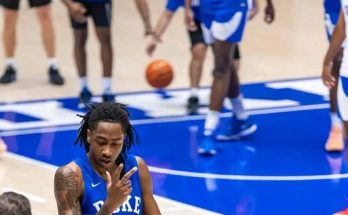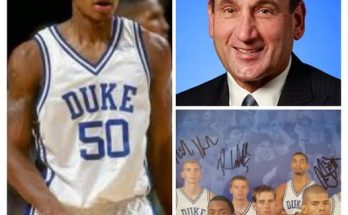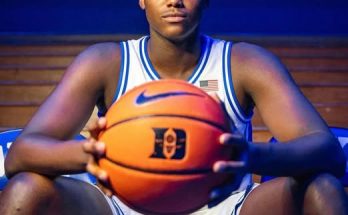The Baltimore Ravens faced a troubling moment recently when their 6th-round rookie cornerback Bilhal Kone suffered a severe lower leg injury during a play. The injury was notably alarming as his leg appeared twisted unnaturally, sending shockwaves through the team, fans, and the wider football community. Such injuries are heartbreaking to witness, especially when they involve young players just beginning their professional journey. For Bilhal Kone, a promising defensive back picked late in the NFL Draft, this incident threatens not only his rookie season but potentially his entire career. The implications of such an injury extend far beyond the immediate physical damage, touching on the psychological and emotional toll it takes on athletes, their teams, and supporters alike.
Bilhal Kone’s path to the NFL was a testament to determination and hard work. Selected in the 6th round, Kone was seen as a player with solid potential and a chance to carve out a niche on the Ravens’ defense. Late-round picks often have to prove themselves through relentless effort, often overcoming the odds to make active rosters. Kone’s physical attributes, speed, and football IQ made him a valuable asset, particularly in a league where cornerbacks play a critical role in pass defense. His injury, therefore, is not just a blow to his personal aspirations but also a setback for the Ravens’ defensive depth, especially as cornerback positions demand a high level of agility and reliability.
Injuries of this nature in football are unfortunately not uncommon, given the high-impact and physical intensity of the sport. The NFL’s history is filled with instances where players have endured gruesome leg injuries, ranging from fractures and dislocations to ligament tears. The recovery process for such injuries can be grueling and uncertain. It often involves surgeries, months of rehabilitation, and extensive physical therapy. For a rookie like Kone, the timing could not be worse. Missing out on vital early experience, training, and game reps can stunt development, potentially delaying his adjustment to the professional level and affecting his confidence on the field.
From a medical perspective, a “leg appearing sideways” suggests a possible fracture or dislocation, or a severe ligament injury that compromises the normal alignment and function of the leg. Such injuries typically require immediate medical attention on the field, often involving immobilization and transportation to a hospital for detailed imaging and treatment. In some cases, surgery is necessary to realign bones or repair torn ligaments. The success of these treatments depends on various factors including the injury’s severity, the player’s age, overall health, and adherence to rehabilitation protocols.
The psychological impact of suffering such a traumatic injury can be profound. For many athletes, their identity and sense of purpose are deeply intertwined with their ability to perform physically. An injury of this severity can lead to emotional distress, anxiety about future performance, and fear of re-injury. Moreover, being sidelined can make players feel isolated from their team and the game they love. Sports psychologists often emphasize the importance of mental health support during recovery to help athletes navigate these challenges and maintain a positive outlook for a successful return.
For the Baltimore Ravens organization, the injury to Kone is a tough blow but also a moment to demonstrate resilience and support. Teams must rally around injured players, offering medical resources, emotional backing, and a clear path for recovery. The Ravens have a reputation for a strong team culture and commitment to player development, which will be crucial in helping Kone through this difficult period. Additionally, the team’s defensive coaching staff will need to adjust their strategies and depth chart to compensate for his absence, emphasizing the importance of having a versatile and prepared roster.
Fans of the Ravens, too, are feeling the impact. Supporters of the team often form strong emotional connections with players, particularly rookies who embody hope and future promise. Watching a young player suffer such a serious injury elicits empathy and concern. The fan community frequently rallies with messages of encouragement and well-wishes, understanding that recovery is a journey that requires patience and perseverance. This collective support can be a powerful motivator for injured players as they work to overcome adversity.
In the larger context of the NFL, Kone’s injury also highlights the ongoing conversation about player safety and health protocols. The league has made strides in recent years to improve medical response times, injury prevention strategies, and rehabilitation processes. However, football’s inherent physicality means injuries will always be a part of the game. Stories like Kone’s serve as reminders of the risks players take and the importance of continuing efforts to enhance safety measures while preserving the competitive spirit of the sport.
Looking forward, the key question remains: what does recovery and return look like for Bilhal Kone? Every injury is unique, and while medical advances have improved outcomes for many athletes, the timeline can vary greatly. For Kone, a successful recovery will depend on a combination of expert medical care, diligent rehab, mental resilience, and support from the Ravens organization and his personal network. His ability to return to full health and regain his competitive form will be closely watched by coaches, teammates, and fans alike.
The story of Bilhal Kone’s injury is not just about a moment of physical trauma but a narrative of the challenges and hopes inherent in professional sports. It reflects the fragility of athletic careers, the strength required to overcome setbacks, and the community that surrounds athletes in their journeys. While the initial injury is deeply unfortunate, it is the subsequent steps toward healing and return that ultimately define the legacy of players like Kone.
In conclusion, the Baltimore Ravens’ rookie cornerback Bilhal Kone’s horrific lower leg injury is a stark reminder of the physical demands and dangers of professional football. It disrupts the promising start of a young athlete’s career and places a burden on the team’s defensive structure. Yet, it also opens a chapter of resilience, recovery, and determination. As Kone embarks on the road to rehabilitation, the football world will watch with hope that he can overcome this setback and fulfill the potential that earned him a spot in the NFL. The journey ahead will be challenging, but with the right support and unwavering resolve, there remains every possibility that Bilhal Kone will return to the field stronger and more determined than ever before.



